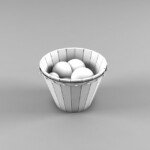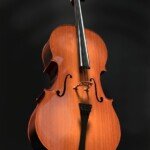Manufacturer’s Kit: Choose the best small CNC machine for your home workshops
The age of desktop manufacturing is here. Gone are the days when precision processing is limited to industrial factories. Driven by manufacturer’s movements and accessible technology, small CNC (Computer Numerical Control) machines are augmenting hobbyists, designers, engineers and small businesses to bring their complex ideas into garages, basements or spare rooms. Whether you are making custom wooden logos, prototyping complex parts, engraving custom jewelry, or producing detailed PCB boards, having the right small CNC machine at home unlocks a creative and practical possibility.
But as more and more choices are chosen, Correct The machine will feel overwhelming. Investing in CNC is a promise that choosing the wrong person can lead to frustration, restrictions and wasted money. Before highlighting a particular machine, let’s reduce noise and explore key considerations.
Key factors when choosing a home CNC machine:
- Budget: This is usually the biggest constraint. Prices vary from a few hundred dollars to thousands of dollars for very basic kits.
- Workspace and size: Measure the available space twice! "Small" It’s relative. Not only the footprint of the machine, but also the workspace envelope (X, Y, Z trip) required by the project. Remember to consider the space for computers, debris extraction and safe operation.
- Material Function: What will you mainly cut or engrave?
- Soft Material (Ideal Starter): Wood (cork and hardwood), plastic (acrylic, PVC, HDPE), foam, MDF. Most budget machines handle these machines very well.
- Harder materials (requires stronger/rigid machines): Non-produced gold (aluminum, brass, copper), hardwood, carbon fiber. More power, rigidity and potential speed/feeding speed are required.
- Avoid black steel: Usually cannot Mechanical steel reliably or safely in any important way.
- Machine stiffness: This is crucial for accuracy, finish quality, and the ability to cut hard materials without excessive vibration (Chatter). Look for machines with a robust frame (solid metal extruded or thick aluminum/steel plate) and a solid linear motion system (round screws and belts).
- Spindle power and type:
- router: Common and universal. Affordable, but generally larger, higher RPM is suitable for wood/plastics. Power (typical 1-2.2kW for homes) affects the depth of cutting and material capacity.
- Precision spindle: Find it on dedicated PCB factories or on high-end machines. Quietrough, lower RPM, but higher torque, better suited for detailed work and some metal.
- Control system and software:
- G code sender: Software running on the PC sends commands to the machine controller.
- Controller: Hardware (such as GRBL, Smoothieware, or proprietary board) can interpret the G code and drive the motor.
- CAD/CAM software: Designing parts (CAD) and generating tool paths (CAM) are essential. Compatibility is key! Some machines bundled with software; others need to buy it separately (Fusion 360 is popular, with amateurs with free versions). For beginners, it is very easy to use.
- Assembly and skill level: Are you ready to build a kit in a few days, or do you need something pre-installed? The kit is cheap and offers learning, but requires mechanical talent. A turnkey machine can make you start faster.
- Community and Support: Powerful user forums and responsive manufacturer support are valuable resources when learning and troubleshooting. Check out the comments and community events of the finalists.
Top Contenders: Small CNC Machines for Home Symposium
Based on the above factors, here are some highly respected options for different budgets and priorities:
-
Shapeoko Series (Carbonide 3D): (Shapeoko 4, Shapeoko 5, Shapeoko Pro)
- judgment: Typical amateur. Known for the balance between competency, reliability and community of excellence. Available in a variety of sizes and upgrades (such as professional lines with improved rigidity).
- key: Rigid structural frame (mainly V-Wheels, ball screws on Pro), good community support, extensive available upgrades/modifications, great software bundled (Carbide Create & Motion). Mainly has wood/plastic/aluminum capability (especially Pro).
- Ideal: Hobbyists, manufacturers, educators, small business prototypes. Those who want a solid platform and have room to grow.
- advantage: Excellent community, sustainability, good value, reliable track record, good price range, good software bundle.
- shortcoming: Need to assemble (medium), V-Wheels with linear guides on the base model, spindle/router installation could be a DIY event.
-
Carbide 3D Nomad: (Nomad Elite)
- judgment: Precision machine expert.
- key: Compact, rigid desktop design. Closed for security and containment. Quiet spindles (usually brushless DC) are designed for precision milling of copper (PCB), aluminum, brass, hardwood and plastic. Good accuracy and frame end.
- Ideal: Jewelry manufacturers, circuit designers (PCBs), model manufacturers, engineers who need high-precision small parts prototypes.
- advantage: Turnkey operation (minimum setup), excellent accuracy and finish, closed and quiet, perfect for metal within its size. Carbide movement software.
- shortcoming: Smaller work areas, with less use for very large wood projects, are relatively high in work price.
-
Bantam Tools Desktop CNC: (Formerly other Mill Pro)
- judgment: Advanced options for desktop PCB milling and very high-precision prototyping.
- key: Focus on the extreme accuracy and reliability of circuit boards and complex parts in metals and plastics. Often with automatic tool changes, complex tool calibration and powerful software integration. Strong and sturdy structure.
- Ideal: PCB professionals, research labs, jewelry manufacturers require small parts, small-scale manufacturing.
- advantage: Top precision, automatic tool changes (some models), excellent software workflow, robust builds, excellent metal features.
- shortcoming: Very high cost, smaller work envelopes focus primarily on electronic scale work.
-
Sainsmart Genmitsu CNC router series: (e.g., proverxl 4040, p01s)
- judgment: Powerful value options for beginners and budget-conscious manufacturers.
- key: Available in a variety of sizes at very affordable prices. Usually based on a kit. Popular for engraving, woodworking basics, symbol making and learning CNC concepts. Community supports growth.
- Ideal: Absolute beginners, tight budget educators, amateurs are focused primarily on wood and plastic. Those who are happy with DIY assembly/tuning.
- advantage: Low entry cost, reasonable price, large communities (especially GRBL), good work area choice.
- shortcoming: Requires a large number of components, frame stiffness is smaller than that of advanced machines (metal plates with certain extrusions/tubes), belt-driven shafts are prone to stretching/accuracy issues, including spindles/routers may require future upgrades. Best for softer materials.
- Onefinity CNC: (Traveler, X Series X Series)
- judgment: Simple, rigid and technical integration are the pillars.
- key: Designed for leg assembly simplicity and excellent stiffness (large extruded aluminum frame), open source controller options, optional wireless operation. Known for its clean design and a solid machine feel.
- Ideal: Amateurs seeking modern stubborn machines are assembled quickly. Good material range function with correct spindle/router.
- advantage: Modern controller (WiFi/Ethernet), extremely rigid structure, modular design, relatively easy class assembly, large community support, good material capability.
- shortcoming: Priced above entry-level Shapeoko, spindle/router is usually a separate purchase/add-on.
Conclusion: From workshop dream to reality
Taking CNC machining home is an exciting journey. Whether you choose a budget-friendly Sainsmart suite to learn ropes, a versatile workhorse like Shapeoko, an exact miracle like Nomad or Bantam, or the powerful simplicity of Onefinity, you can create abilities with unprecedented precision and repetition. Remember to align your machine choices with your actual budget, space, project needs and material desires.
Recognize the limitations: For projects that require 4 axes or optimal processing to be processed simultaneously 5-axis CNC machiningextreme accuracy tolerances, challenging exotic materials (such as titanium or hardened steel), high-volume production operation, or just in the absence of time/machine functionality, Working with professional services is a wise choice.
This is Great Good at it. As a professional five-axis CNC machining manufacturer, we bridge the gap between home seminar capabilities and industrial-grade accuracy. GREMLIGHT has an advanced five-axis machining center, sophisticated production technology and deep material expertise to solve complex metal parts manufacturing challenges. We go beyond processing and provide comprehensive one-stop post-processing and sorting services. Whether you need a lifelike prototype or a pack of highly tolerant components, Greatlight offers fast-changing custom-precision machining on most materials at a competitive price. As you focus on designing your next breakthrough, let’s deal with demanding projects – get a quote from Greatlight today! (Insert link to Greatlight Contact/Page).
FAQ – Small household CNC machine
Q1: What exactly is a CNC machine?
Answer: CNC represents computer numerical control. It is a machine that uses computer instructions (G code) to accurately control its movement (such as a router, milling machine or laser cutter) to automate the process of cutting, engraving, drilling, drilling or engraving materials.
Q2: What materials can I actually use on one Home Desktop CNC machine?
A: Mainly softer materials: wood (cork, hardwood, plywood, MDF), plastic (acrylic, ABS, HDPE, PVC), foam (XPS, EVA) and soft nonferrous metals (such as aluminum, brass and copper). Due to power, stiffer metals (such as steel) and very brittle materials (such as glass) are not usually suitable for these machines. Material selection significantly affects cutting speed, cutting depth and tool life.
Q3: How much space do I really need?
Answer: Beyond the machine! You need space:
- The machine itself + its travel envelope (x/y/z size).
- Secure operation access (before and after).
- Connected computer/laptop.
- dectusting/extraction system (critical!).
- Material storage and tools.
Question 4: Is CNC difficult to learn?
A: There is a learning curve. It involves mastering three key areas:
- CAD: Design parts (software like Fusion 360, Freecad, Tinkercad, etc.).
- CAM: The tool path to convert the design into a machine (software such as Fusion 360 CAM, VCARVE, UGS, etc.).
- Machine operation: Set up machines, workers, tools and run safely.
Start with a simple project and take advantage of online tutorials and community forums – resources are abundant!
Q5: How loud are they? Will the neighbors complain?
A: They can be large, especially when routers cut hard materials. The spindle/router will produce noticeable noise, cutting itself increases sound. The closed machine (like nomads) is quieter. Always consider ear protection in living conditions and check for restrictions. The dust extraction system also adds noise.
Question 6: What safety precautions are crucial?
one: no way Operate CNC without understanding its hazards:
- Eye protection: Flying chips are dangerous. Always wear safety glasses, ideally a full-face shield.
- Hearing protection: Use earplugs or earmuffs.
- Respiratory protection: CNC produces fine dust (especially MDF and composite materials). Proper dust collection system and N95 respirators are crucial.
- Loose clothes/jewelry: Fix long hair and remove loose items that may be caught.
- Never leave unattended: Always supervise the machine at runtime.
- Ensure the labor force: Make sure your workpieces are clamped very safely.
Question 7: When should I consider outsourcing to professional CNC services, like Greatlime?
A: Choose professional services when your project requires:
- Faster turnover speeds than the ones offered by home machines.
- 4-axis or 5-axis machining complex.
- Materials other than wood/soft metals (e.g. steel, titanium, exotic alloys).
- Very tight tolerance (±0.001" or less).
- A large number of required consistent accuracy.
- Advanced finishing processes that you cannot access.
- You lack the ability or confidence in the key parts.
Question 8: What is the difference between 3-axis, 4-axis and 5-axis?
A: It refers to how many directions the cutting tool (or workpiece) can move at the same time:
- 3 Axis: Up/down (z), left/right (x), forward/rear (y). Home machines are the most common.
- 4 axis: Add rotation around the X-axis (A-axis). Suitable for cylindrical parts or complex engravings that require rotation.
- 5 axis: Add rotation around the y-axis (B-axis) exist 4 axes. Allows the tool to approach the workpiece from any angle in a single setup, enabling complex geometry. Due to cost and complexity, it is mainly industrial/specialty.

















